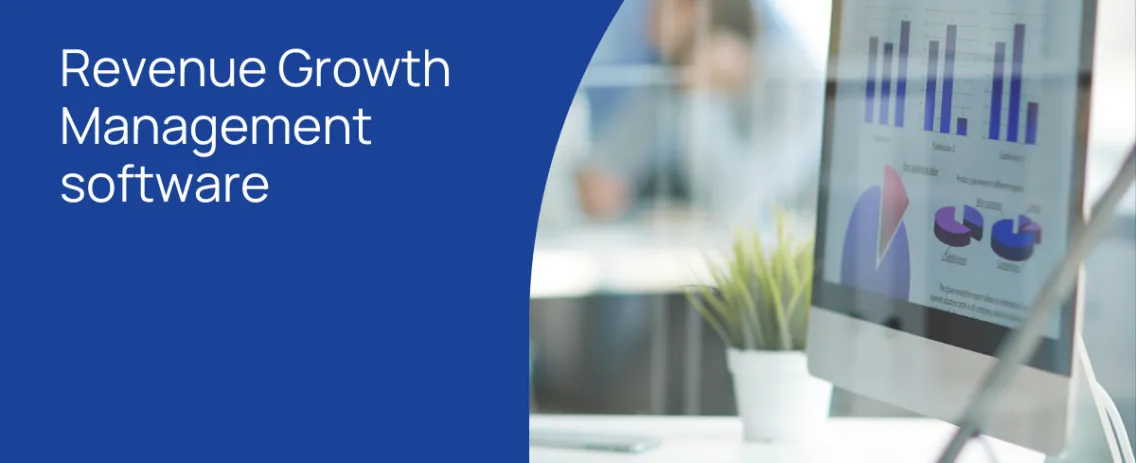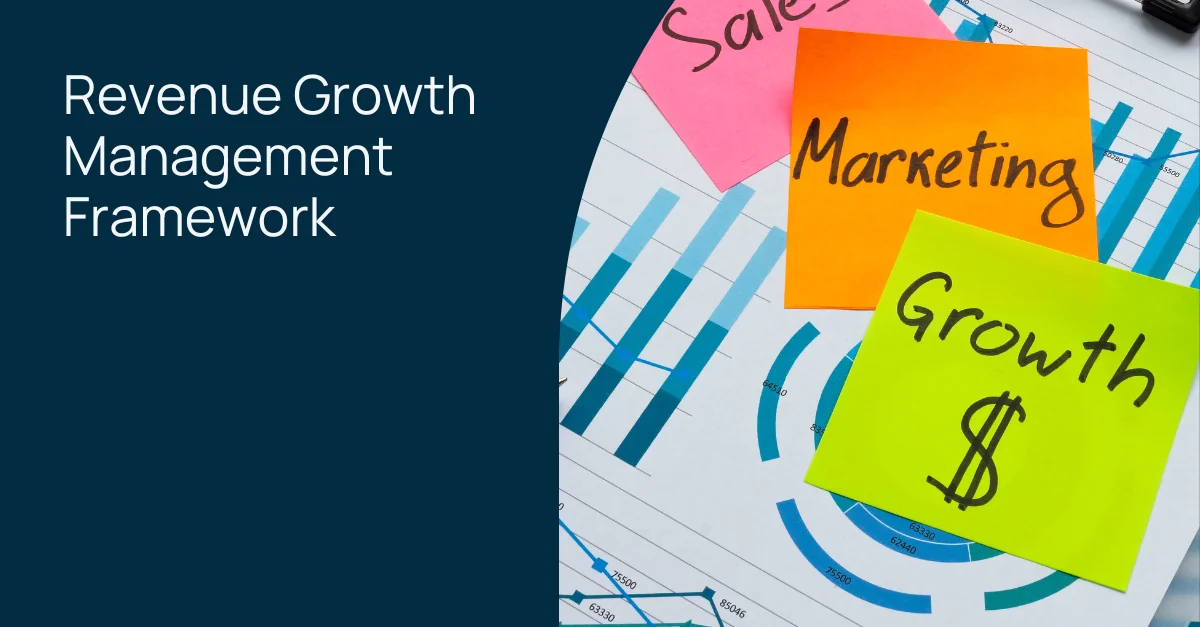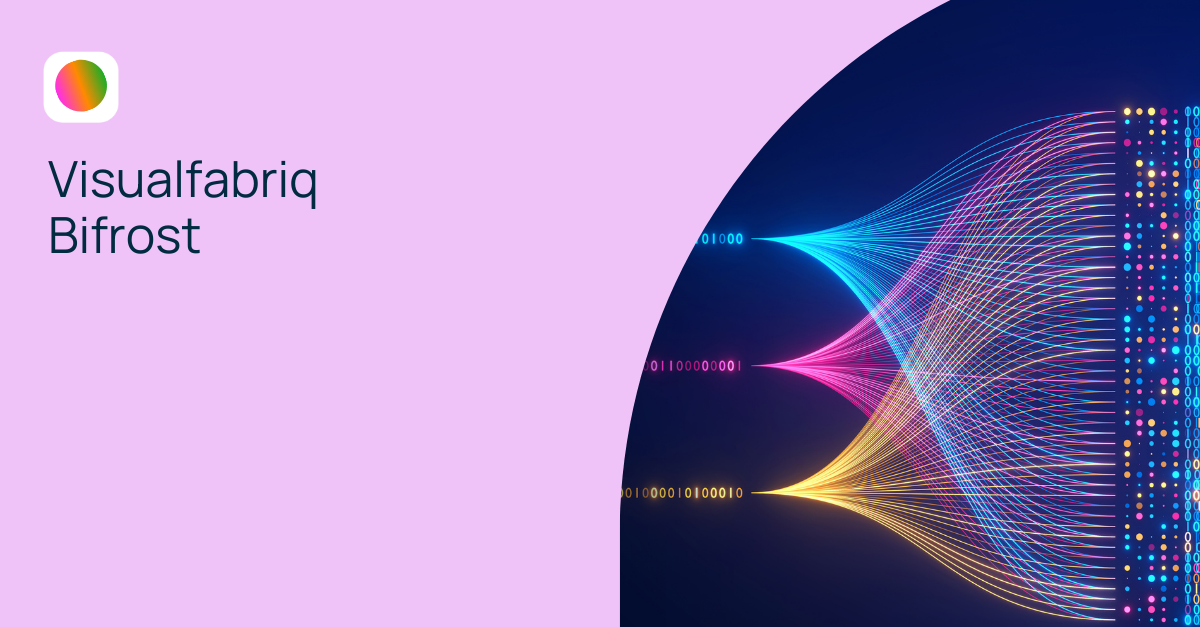
How to select the right Revenue Growth Management software
Let’s face it. The consumer packaged goods world is not exactly predictable.
The best-laid plans can easily be thrown off track by unexpected events. By anything from volatile interest rates crimping customer spending, to political instability adding 9000 miles to shipping routes for tea leaves.
With so many short-term problems to react to, it can be hard to take the long view.
Yet that is exactly what leaders and frontline managers need to do. At least if they want to build a more sustainable, predictable and resilient business model. In other words, if they want to move towards revenue growth management (RGM) and the implementation of revenue management software.
Revenue growth management is about leaders embracing the methodical and holistic management of all the functions at the company’s command. This includes everything from promotions and pricing to trade investments, marketing, and sales and operations planning.
At one level, adopting revenue growth management software is a question of mindset. Leaders and senior managers must consciously break out of their silos. They need to pull together towards common, sustainable objectives that deliver value for the company as well as for retailers and consumers.
But this is much easier to achieve with the right technology foundation. So that everyone in the organization has the right tools and the right data. Not just to complete their own tasks and projects, but also to understand how they depend on each other.
So, what should CPGs look for in their revenue growth management software?
It’s complicated.
The CPG business is complex, with long supply chains and sophisticated retail networks.
But each CPG company will also have their own complex internal ecosystem of demand forecasters and marketers, account managers, sales professionals, and promotion specialists. Some will have more of an internal focus. Others will be working closely with retail partners and networks who get the product to the consumers.
When a CPG company adopts revenue growth management software, these diverse teams must come together. So that they can pursue sustainable and profitable growth under a comprehensive commercial plan.
This requires synchronization across five key pillars: promotion management; pricing; trade spend; brand positioning; and mix optimization. This is predicated on diverse teams sharing a single and centralized version of the truth, which allows them to develop their own plans, while other teams and senior management can see their potential impact.
This makes it easier for all teams to optimize their own operations, coordinate them with other teams, and spot opportunities for further sustainable growth and potential efficiencies.
It’s hard to argue with this vision. Making it a reality means some serious thought about the underlying systems teams are operating on. Legacy, siloed systems impede the sharing of information that allows teams to build reliable forecasts and coordinate the plans they put in place to achieve them.
It perhaps makes more sense to think about the game-changing characteristics of a revenue growth management approach and how they map to a potential software.

The enabler map for Revenue Growth Management software
Enabler 1: Does it lower the total costs of ownership?
As we’ve seen, when different teams are using different tools, it becomes impossible to develop a single view of the truth. This heavily compromises efforts to develop a revenue growth management approach.
But fragmented tool chains also have a direct financial effect as well. Tech teams must support and pay for multiple platforms. Trouble shooting becomes arduous. Outages take longer to resolve. Upgrades or development becomes tortuous and expensive.
An integrated SaaS software designed to support revenue growth management from the outset doesn’t just connect previously siloed teams and enable smooth data flows. It also ensures teams are working with common tooling, can optimize workflows, and benefit from cutting-edge analytics. And with automatic updates, they are always working with the latest features.
Enabler 2: Will it drive efficiency through data alignment?
Creating a holistic revenue growth management plan will be virtually impossible unless all teams are working to a single view of the truth. Creating that “one number” requires data alignment across the organization.
This isn’t just about data flow through the organization. It’s about ensuring the different tools that teams use to analyze that data and plan their programs, investments, promotions, and marketing activations, form a single, logically connected ecosystem. That way, changes to one plan or activity are reflected across the organization, meaning teams and their plans are coordinated and constantly optimized.
Enabler 3: Does seamless data integration increase efficiency?
Building a holistic revenue plan requires a holistic view of the environment a CPG exists within.
When functional teams rely on spreadsheets or bespoke tools, updating data is often a semi-manual, sporadic, and error-prone process. Sharing data is also arduous, slowing data flow and opening the possibility of mistakes. And all these pots of data must still be poured into the ERP system at the heart of the company. Eventually.
Getting to a single view of the truth means breaking open those silos. But that still doesn’t give the complete picture. CPG teams need access to external sources of information such as syndicated data and EPoS returns. Orr even weather or sentiment information. And all this needs to be automated from the outset.
Seamless data integration and efficient data management is a pre-requisite for developing the win-win investment strategies needed for revenue growth management.
Enabler 4: Can it increase predictability and drive optimization?
Data integration and alignment give leaders a more holistic view of their operations and the broader environment. However, to take things to the next level, they need to have access to cutting-edge AI algorithms and analytics to unlock the value in that data.
Applying AI to historical data, informed by external information, results in more accurate baselines. These set the stage for much more accurate forecasts, which in turn enables demand planners to think beyond the most likely outcome, and plan for a range of potential scenarios. These could be based on external factors, but equally could be based on different actions by the CPG company.
Senior management and front-line professionals can begin to optimize as they plan, making it far easier to plot the sustainable growth which is the ultimate aim of revenue growth management software.
Enabler 5: How can you eliminate repetitive tasks?
Manual processes for updating information, sharing proposals, or approving plans don’t just slow things down. They open up the possibility of both minor but irritating, and major and catastrophic mistakes. Moreover, they suck up the time of CPG professionals with repetitive and unproductive manual work.
Transitioning to revenue growth management software requires automation to ensure consistency and workflows tailored for maximum efficiency. This frees up your highly knowledgeable CPG pros to focus on optimizing their current programs, spot opportunities to innovate for the future, and contribute to the long-term revenue plan.

How Visualfabriq helps
Visualfabriq’s software spans the key pillars of revenue growth management, with tailored, but highly integrated, modules. These cover trade promotions, trade spend, marketing, demand forecasting, and revenue growth.
A unique data integration suite smooths connectivity, giving CPG pros a complete overview of all the relevant data. This includes external information, and the ability to share projects and insights, and construct workflows.
Advanced AI is embedded in the ecosystem. This allows each team to get the most out of their data, optimize projects and plan for the unexpected.
And because Visualfabriq is delivered as a service, implementation and support costs are reduced, while frontline professionals always have the latest tooling.
The result is that all teams are on a common software that eliminates routine manual tasks and delivers accurate forecasting and full visibility across all teams. Users benefit from Visualfabriq’s product lifecycle technology, smoothing product switching throughout the system.
The underlying data connectivity, and the advanced analytics, mean professionals can optimize as they plan, and evolve multiple scenarios. This in turn produces better and more coordinated plans cutting across different functions.
Your team is no longer reacting to the unexpected, but actively anticipating and planning for it. This leaves them better placed to work holistically, both with their colleagues and with their retail partners. It enables them to deliver on the sustainable revenue and profit growth the company needs.
Takeaways
Currently, CPGs must grapple with a lot of volatility. That makes adopting revenue growth management software both more important, and harder to achieve, than ever.
Once an organization has made the decision to adopt revenue growth management software, it must match this mindset change with the appropriate technology. Visualfabriq delivers both the hands-on tools and the underlying data connectivity to support revenue growth management.
To see how Visualfabriq’s software maps to the key attributes of a revenue growth management strategy, request a demo.


